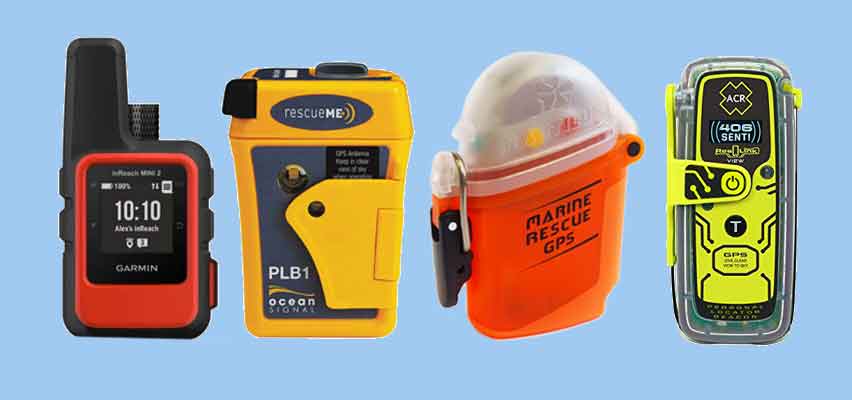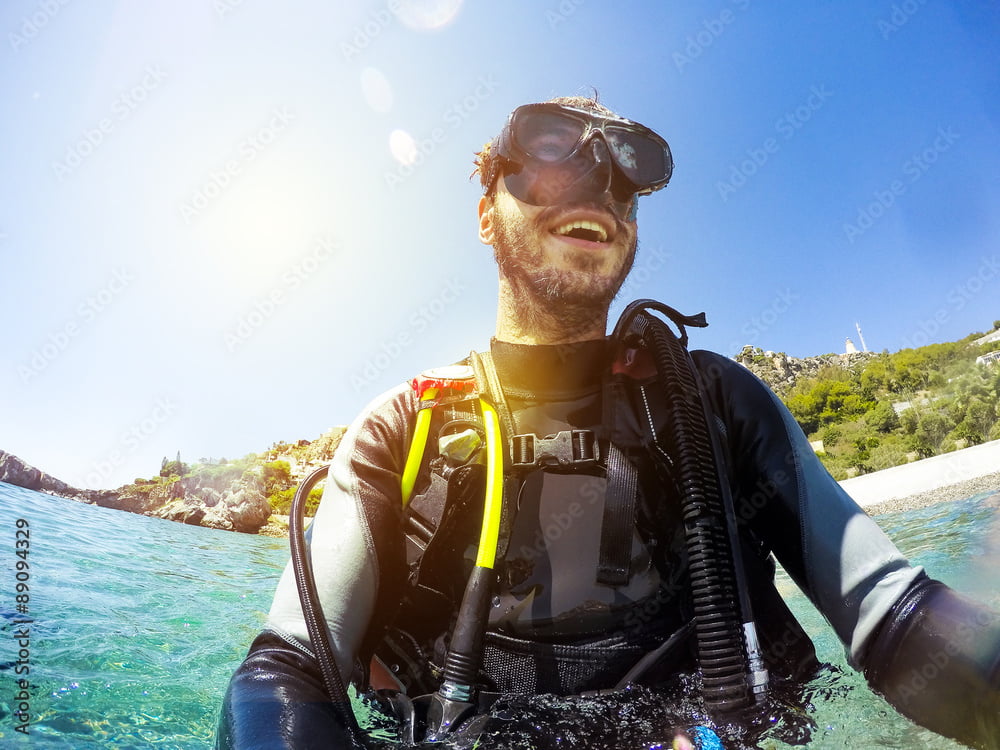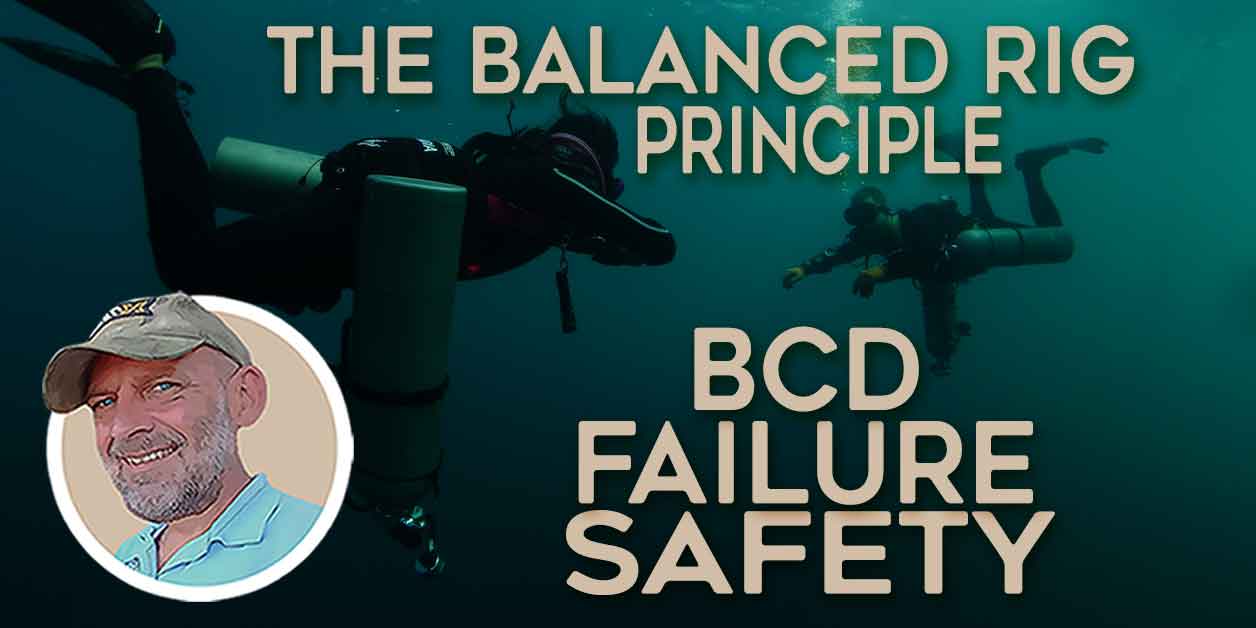A Guide To Personal Locator Beacons (PLB) For Scuba Diving
If you’re a scuba diver, you know that safety should always be your top priority. One of the essential safety devices to consider are Personal Locator Beacons (PLB).
PLBs are crucial in emergency situations when you need to signal for help. In this guide, I will cover everything you need to know about PLBs for scuba diving:
- How PLBs work
- Choosing the right one
- Using a PLB effectively
- PLB maintenance
- Comparison of PLBs with other safety devices
- The legal regulations governing their use
These devices are essential for any scuba diver, as they can help you stay safe and potentially save your life in an emergency. Read on to learn how to prioritize your safety while scuba diving.
Understanding Personal Locator Beacons (PLBs)
When you’re scuba diving, it’s essential to be prepared for any unexpected emergencies that could arise. One crucial device that can help you in a dire situation is a Personal Locator Beacon (PLB). In this section, we will dive deeper into what PLBs are, how they work, the different types available, and why they are essential for scuba diving.
What are Personal Locator Beacons (PLBs)?
A PLB is a small electronic device that transmits a distress signal to satellites in orbit, which are then received by authorities who can locate and rescue you. PLBs are similar to Emergency Position Indicating Radio Beacons (EPIRBs) used on boats, but they are smaller and designed for personal use.

How do Personal Locator Beacons (PLBs) work?
PLBs use a global distress frequency to transmit a signal to satellites, which then relay your location to search and rescue teams. PLBs typically have an antenna that must be extended, and some models also include a strobe light for visual location.
In the event of an emergency, Personal Locator Beacons (PLBs) can provide vital information to emergency responders. PLB registration includes the owner’s name and an emergency contact person, who can confirm the owner’s situation with the rescue coordination center.

Why are Personal Locator Beacons useful?
Personal locator beacons (PLBs) are crucial for scuba divers as they provide an extra layer of safety in case of emergencies. Divers can get swept away from their dive boats, and it can take extensive searches to find them.
In some cases, divers may be floating alone in the ocean for hours or days.
PLBs are particularly useful when diving in remote locations or in areas with powerful currents. Carrying a PLB for diving is like having dive insurance. It is a small investment that could potentially save your life.
Different types of Personal Locator Beacons (PLBs)
There are two types of PLBs:
- GPS-enabled
- Non-GPS enabled
GPS-enabled PLBs are more accurate and can send your exact location to rescuers, while non-GPS PLBs can still transmit a distress signal but may not give your exact location.
Benefits of PLBs for scuba diving
PLBs can be a lifesaver in an emergency situation while scuba diving. If you become lost or separated from your dive boat activating a PLB can quickly alert authorities to your location and expedite rescue efforts.
- Increased safety and security while diving
- Ability to quickly and accurately locate you
- Can signal for help when out of range of other communication devices
- May reduce search and rescue time and costs
- Compact and lightweight, easy to carry while diving
- Can operate in remote areas
Choosing the best Personal Locator Beacon
Choosing the right PLB is crucial for ensuring your safety while scuba diving. In this section, we will discuss the factors you should consider when selecting a PLB, the features to look for, and popular brands of Personal Locator Beacons for scuba diving.
Factors to consider when choosing a PLB
There are several factors to consider when selecting a PLB for scuba diving:
- Size and weight of the PLB
- Battery life and replacement options
- Water resistance and depth rating
- GPS accuracy and tracking capabilities
- Type of distress signal transmission (satellite, radio, etc.)
- User-friendly features and interface
- Compatibility with other safety equipment
- Brand reputation and customer reviews
- Cost and affordability.
Personal Locator Beacons features to look for
When selecting a PLB, look for devices that have features such as:
- GPS tracking: GPS-enabled PLBs are generally more accurate and can provide your exact location to rescuers, making them a better option for scuba diving.
- Strobe lights: Look for PLBs that have strobe lights for visual location. A strobe light can make it easier for rescuers to spot you in low-light conditions.
- Waterproof design: Ensure that the PLB you choose is waterproof. A waterproof design ensures that the device will work even if it becomes submerged in water.
- Long battery life: Choose a PLB with long battery life to ensure it remains functional for an extended period.
Comparison of different PLB models
There are several popular PLB brands on the market, including ACR, McMurdo, and Ocean Signal. Each brand offers different models with various features and price points, so it’s essential to research and compare different options before making a purchase.
The best Personal Locator Beacons for scuba diving
Nautilus Marine Rescue GPS
The Nautilus Marine Rescue GPS is a personal locator beacon that is specifically designed for diving. When the button is pressed, the Nautilus uses GPS to determine your location and transmits that with a distress signal to nearby boats using AIS (Automatic Identification System).
The range of the distress call is up to 34 miles, but this is in ideal conditions. The device is waterproof to 130m and is positively buoyant, so it will float if you drop it. The battery lasts for 5 years and is easily replaceable. No subscription service is needed, so there are no costs beyond the initial purchase.
The older version, Nautilus Lifeline, also had a two-way radio on VHF frequency and was bulkier, but it’s no longer produced.
Nautilus Marine Rescue GPS Pros
- Specifically designed for diving
- Waterproof to 130m
- Positively buoyant, won’t sink if dropped
- User-replaceable battery lasts for 5 years
- No subscription cost
Nautilus Marine Rescue GPS Cons
- The 34-mile range claim is based on ideal conditions with the antenna raised up to a significant height above the water; in reality, the range may be much lower, especially in challenging conditions
- The Nautilus does not trigger an emergency search and rescue response, so if your distress signal isn’t picked up by any nearby boats, there is no other way of attracting help
- Only useful for diving. Other options can be used for land-based activities.
Garmin inReach Mini 2
The Garmin inReach Mini 2 connects to the private Iridium satellite network and contacts Garmin’s IERCC (International Emergency Response Coordination Center) when the SOS is activated.
It has two-way communication via SMS and email. The battery is USB rechargeable with a life of approximately 30 days in tracking mode. There is an optional dive case that is waterproof to 100m.
The device requires a $15 per month subscription to access the satellite network for location tracking and two-way messaging.
Garmin inReach Mini 2 Pros
- Two-way communication
- Dedicated dive canister
- Can be used for non-diving activities
- USB rechargeable with a 14-day duration
- Two-way communication can be used in non-emergency situations
Garmin inReach Mini 2 Cons
- Requires subscription for the device to work
- Potential costly rescue fees
- Must keep the battery charged
- Negatively buoyant when outside the dive case
- More expensive than other devices listed here
ACR ResQLink View
The ACR ResQLink View is a true PLB that accesses the SARSAT network dedicated to rescues. You must register your device and add information about yourself and what you use the device for.
The unit has a strobe and an infrared strobe. It also uses Galileo GNSS positioning, in addition to GPS. It will work for 28 hours once activated to transmit.
ACR ResQLink View Pros
- Long battery life of up to 5-7 years
- Waterproof to 5m (16 feet)
- No subscription cost
ACR ResQLink View Cons
- Not specifically designed for diving
- You must remember to keep the battery charged
- No two-way communication
- It is more expensive than other devices
Ocean Signal RescueME PLB1
The Ocean Signal RescueME PLB1 operates on the SARSAT system, similar to the ResQLink. You can fill in your information online to help rescuers identify you and contact your emergency contacts.
This can be updated with specific information for each trip, such as the liveaboard you’re diving from or the region you are diving in. The battery lasts for 24 hours once in transmission mode.
Ocean Signal RescueME PLB1 Pros
- No subscription cost.
- Waterproof to 15m (49 feet).
- Compact in comparison to other units.
- Can be used for non-diving activities.
- 7-year battery life.
Ocean Signal RescueME PLB1 Cons
- Will sink if dropped at the surface. However, a floating pouch is available.
- No dedicated dive case. You must buy a separate watertight canister.
- The battery is not user-replaceable. After 7 years, you must take it to a dealer to replace the battery and test the functionality.
Dive Canisters for PLBs
If you choose a PLB like the Ocean Signal RescueME or ACR ResQLink that doesn’t offer a dedicated dive case, you will need a canister to take it on your dives.
These canisters can be large and take up space on your dive gear, but they also give the opportunity to house some extra safety items. There are many options for dive storage canisters.
Summary of Personal Locator Beacon options
PLB | GPS | Satellite | Waterproof | Range | Battery | Price |
|---|---|---|---|---|---|---|
Nautilus | ? | ? (AIS) | 130m | 34 miles | 5 years | $199 |
? | ? | 100m | Global | 14 days | $399 | |
ACR | ? | ? | 5m | Global | 5-7 years | $399 |
RescueME | ? | ? | 15m | Global | 7 years | $349 |
The difference between a PLB and an EPIRB
It is important to note that a PLB differs from an EPIRB (Emergency Position Indicating Radio Beacon). The main difference between the two is their intended use and the environment they are designed for. EPIRBs are registered to boats, whereas a PLB is intended for individual use.
An EPIRB is a larger device than a PRB and will have a substantially longer battery life. It is designed to automatically activate when submerged in water and will transmit a distress signal to search and rescue authorities via satellite. EPIRBs are required on most commercial vessels and are also recommended for use on larger recreational boats.
How to use a Personal Locator Beacon (PLB)
Using a PLB correctly is crucial for ensuring your safety in case of an emergency. In this section, we will discuss the steps to activate a PLB, best practices for using a PLB, how to register a PLB with authorities, and what to do after activating a PLB.
Steps to activate a PLB
In case of an emergency, activating your PLB is the first step to signal for help. To activate your PLB, locate the activation switch on your device and press it. Some devices may require you to extend the antenna or remove a safety pin before activating.
Best practices for using a PLB
To ensure the effectiveness of your PLB, it’s important to follow best practices when using it. These include carrying the device with you at all times, ensuring it’s fully charged before each use, and testing it regularly to make sure it’s working correctly. It’s also important to know the specific activation and signaling procedures for your device and to inform others of its location and how to activate it in case of an emergency.
How to register a PLB with authorities
Before using a PLB, it’s important to register it with the appropriate authorities. This will ensure that your device is properly linked to your personal information, making it easier for rescuers to locate you in case of an emergency.
You can register your PLB online or by mail, and the process typically involves providing personal information, such as your name, contact information, and emergency contacts. Manufacturers give details for this process.
What to do after activating a PLB
After activating your PLB, it’s important to stay calm and wait for rescue teams to arrive. You can use other signaling devices, such as a whistle or signaling mirror, to help rescuers locate you. It’s also important to conserve your energy and resources while waiting for rescue and to follow any additional instructions provided by search and rescue teams.
Maintenance and testing of Personal Locator Beacons (PLBs)
Regular maintenance and testing are essential for ensuring the effectiveness of your PLB in case of an emergency. In this section, we will discuss the importance of regular maintenance and testing, how to maintain a PLB, how to perform self-tests on a PLB, and the recommended frequency of testing.
Importance of regular maintenance and testing
PLBs are devices that can potentially save your life, so it’s important to ensure they are always in good working condition. Regular maintenance and testing can help identify any issues or malfunctions before they become a problem and ensure your device is ready to be used in case of an emergency.
How to maintain a PLB
To maintain your PLB, you should clean it regularly with a soft cloth and avoid exposing it to extreme temperatures or moisture. You should also inspect your device for any signs of damage, such as cracks or corrosion, and replace any damaged parts immediately. Additionally, you should keep your PLB’s battery charged and replace it according to the manufacturer’s instructions.
How to perform self-tests on a PLB
Performing self-tests on your PLB is an important step in ensuring its effectiveness. Self-tests can help identify any issues or malfunctions before they become a problem and ensure your device is ready to be used in case of an emergency. To perform a self-test, follow the manufacturer’s instructions for your device, which typically involve pressing a specific combination of buttons or switches.
Recommended frequency of testing
The recommended frequency of testing your PLB varies depending on the manufacturer and device model. However, it’s generally recommended to perform a self-test before each use and to conduct a more comprehensive test, including a GPS fix, every six months. It’s also important to replace your device’s battery according to the manufacturer’s instructions and to replace your device entirely if it is beyond its recommended lifespan.
By regularly maintaining and testing your PLB, you can ensure its effectiveness in case of an emergency while enjoying the incredible underwater world of scuba diving.
Other emergency signaling devices for scuba diving
While PLBs are an essential emergency signaling device for scuba diving, there are other options available. In this section, we will compare PLBs with other emergency signaling devices, discuss the benefits of using multiple devices, and highlight some popular options.
Comparison of PLBs with other emergency signaling devices
Other emergency signaling devices for scuba diving include:
- Dive alert horns
- SMBs
- Distress whistles
- Strobes
- Dive lights
- Glow sticks
Compared to PLBs, these devices have limitations such as limited range and may not be visible in low-light conditions. However, they can still be valuable additions to your scuba diving emergency signaling toolkit.
Benefits of using multiple emergency signaling devices
Using multiple emergency signaling devices can increase your chances of being spotted or heard in an emergency. By using a combination of devices you can cover multiple modes of communication and increase your visibility and audibility.
Popular emergency signaling devices for scuba diving
Some popular emergency signaling devices for scuba diving include:
- Dive Alert Horn: A compact air horn that can be attached to your BC and activated manually to emit a loud sound that can be heard up to a mile away.
- Visual Signaling Devices: Strobe lights, signal mirrors, and chemical light sticks are examples of visual signaling devices that can help rescuers locate you in low light conditions.
- Distress Whistles: Small and portable, a distress whistle can be attached to your BC and used to signal for help.
By considering the benefits of using multiple emergency signaling devices and exploring the options available, you can enhance your scuba diving safety and be prepared for any emergency.
Personal Locator Beacons and legal regulations
While PLBs are an essential safety device for scuba diving, it’s important to understand the laws and regulations governing their use. In this section, we will discuss the legal requirements for using a PLB, how to comply with regulations, and the penalties for misuse.
Laws and regulations governing the use of PLBs
PLBs are regulated by various international and national bodies, including the International Maritime Organization (IMO) and the Federal Communications Commission (FCC). These regulations govern the design, performance standards, and frequency bands used by PLBs.
How to comply with regulations while using a PLB
To comply with regulations while using a PLB, you should ensure that your device is properly registered with the relevant authorities and that it meets the required design and performance standards. You should also ensure that you only use your PLB in an emergency situation and that you follow any instructions provided by the manufacturer.
Penalties for misuse of personal locator beacons
Misuse of personal locator beacons can result in penalties, including fines and imprisonment. In some countries, activating a PLB in a non-emergency situation can be considered a criminal offense. Therefore, it’s essential that you only activate your PLB in an emergency situation and that you understand the consequences of misuse.
By understanding the legal regulations governing the use of personal locator beacons, and taking steps to comply with them, you can ensure that you are using your PLB safely and responsibly.
Should you invest in a Personal Locator Beacon (PLB)?
In conclusion, Personal Locator Beacons (PLBs) are essential safety devices for scuba diving. They provide divers with a reliable means of alerting rescue services in case of an emergency. It is important to understand what PLBs are, how they work, and what features to look for when choosing one.
When using a personal locator beacon, it is crucial to follow the manufacturer’s instructions and ensure that it is properly maintained and tested. Additionally, it is advisable to use multiple safety devices while scuba diving for added protection.
Finally, I encourage all scuba divers to prioritize safety and invest in a Personal Locator Beacon. It could mean the difference between life and death in an emergency situation. Always remember to dive within your limits, follow safe diving practices, and take all necessary precautions to ensure a safe and enjoyable diving experience.
Originally posted 2023-04-15 11:30:18.









